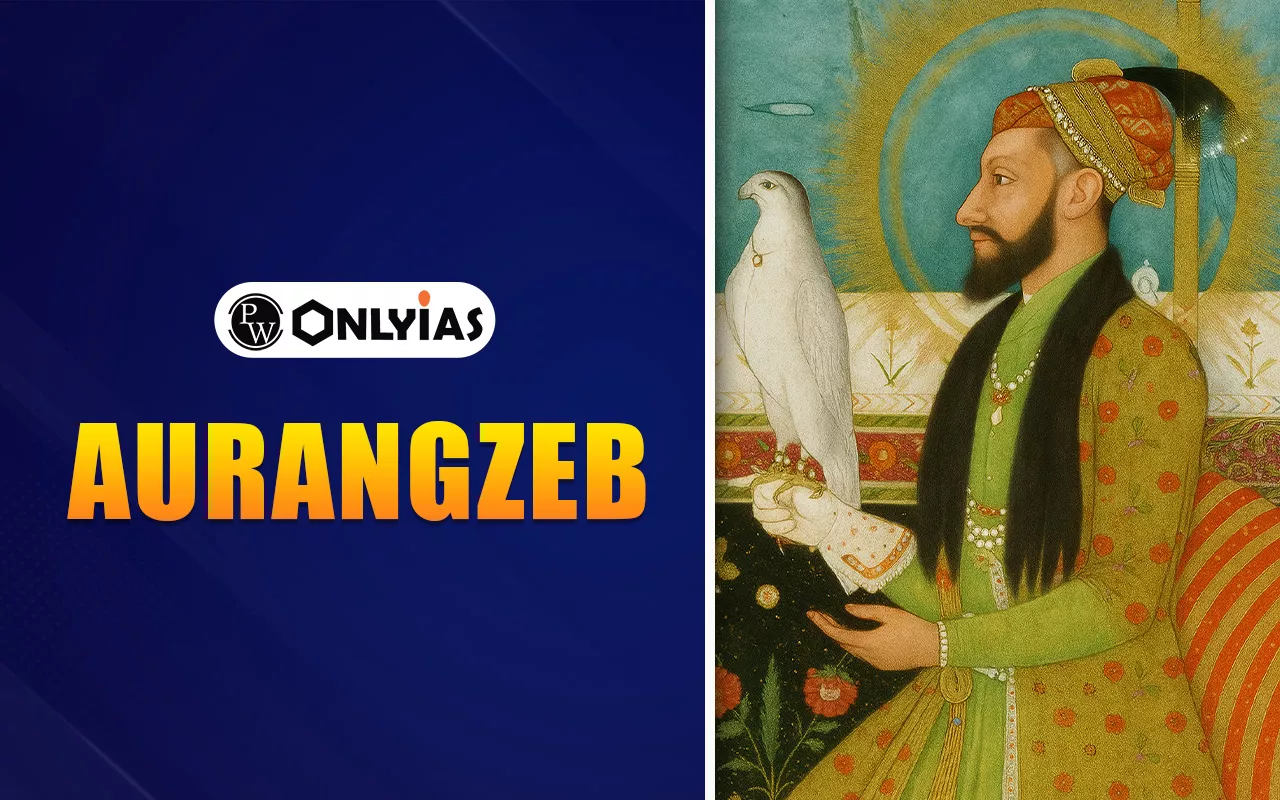Aurangzeb was the sixth Mughal emperor, ruling from 1658 to 1707. Known for his religious conservatism and military expansion, he expanded the empire to its greatest territorial extent. His reign saw a shift toward orthodox Islam, which led to conflicts with other religious groups. Despite his successes, his policies have been controversial, contributing to the eventual decline of the Mughal Empire.

Aurangzeb was the sixth Mughal Emperor. Born in 1618, he ruled until 1707, and during his reign the Mughal Empire expanded to its greatest territorial extent. He is widely remembered for his strict Islamic policies, firm administrative control, and prolonged military campaigns. His reign represents both the height of Mughal expansion and the beginning of its decline due to constant warfare, high taxation, and increasing internal resistance.
Aurangzeb remains one of the most debated Mughal rulers—an exceptional military strategist and a devout Islamic ruler who extended Mughal authority deep into southern India. However, his orthodox religious decisions, continuous wars, and financial pressure weakened the empire and deepened internal divisions.
Aurangzeb Alamgir (3 November 1618 – 3 March 1707) was the sixth Mughal Emperor and is often regarded as the last powerful ruler of medieval India. He greatly expanded the Mughal Empire but faced frequent uprisings due to his religious views and unending military campaigns.

| Who Was Aurangzeb? | |
| Aspect | Details |
| Full Name | Aurangzeb Alamgir |
| Birth & Death | Born: 3 Nov 1618 (Dahod, Gujarat) • Died: 3 Mar 1707 (Ahmednagar) |
| Position/Role | Mughal Emperor, military commander, Islamic ruler |
| Education | Learned Persian, Arabic, Islamic law, military strategy |
| Military Campaigns | Expanded the empire; led long Rajput & Deccan campaigns |
| Religious Policies | Reimposed jizya, enforced Sharia, ordered temple demolitions |
| Administration | Centralized rule, large standing army, strict governance |
| Famous Works | Known for military and administrative decisions |
| Philosophy | Practised orthodox Sunni Islam |
| Legacy | Empire reached largest size but was weakened by wars |
| Recognition | Admired for discipline; criticized for severity |
Aurangzeb was the son of Shah Jahan and Mumtaz Mahal. Growing up in the royal court, he learned languages, statecraft, Islamic law, and warfare. Despite being the third son, he stood out due to his strict lifestyle, military capability, and sharp intellect.
He participated in several early military campaigns and was known for his disciplined nature. His conservative worldview distinguished him from earlier emperors who followed more tolerant policies.
Aurangzeb ascended the throne in 1658 after defeating Dara Shikoh. His reign marked the Mughal Empire’s territorial peak but also initiated its decline. He spent years in the Deccan fighting the Marathas, southern sultanates, and Rajputs.
While these campaigns expanded Mughal borders, they drained resources and overstretched administration.
Aurangzeb was one of Shah Jahan’s children, alongside Dara Shikoh, Shuja, Murad, and Arjumand Banu Begum. After Shah Jahan fell ill, a war of succession began. Aurangzeb defeated his brothers, most notably Dara Shikoh, and captured the throne.
His son Azam Shah succeeded him briefly but failed to restore the empire’s strength, leading to rapid fragmentation.
Aurangzeb was known for his strict Islamic principles, in contrast to Akbar’s tolerant approach.
Below are the religious acts which is passed by him or can be said to have been done by him:
These decisions pleased orthodox Muslims but alienated Hindus, Sikhs, and other communities.
Under Aurangzeb, the Mughal Empire reached its widest boundaries. He conquered key Deccan Sultanates and expanded control across South India and Rajasthan.
However, these campaigns by Aurganzeb were extremely expensive and exhausting. The Mughal–Maratha conflict became one of the longest wars of his reign and weakened imperial strength.
Below, we have provided the names of Major Battles fought by Aurangzeb. Basically, these are some of the huge battles that somehow helped him set up his name:
These victories expanded territory but strained finances and manpower for everyone, and due to this, most of the people were disappointed by him as a leader and his rule.
Aurangzeb preferred strict governance over cultural patronage. He strengthened central control, built a powerful army, and enforced firm legal regulations.
Many court historians and foreign travelers have documented his rule extensively because he, with his sharp-minded strategy, has done a lot that changed the history of India.
Check Out UPSC CSE Books
Visit PW Store
Aurangzeb’s legacy is marked by discipline, military strength, and administrative rigor—but also by intolerance, financial strain, and continuous warfare. He believed that everything should be under his control, and for that, he could do anything.
These problems accelerated the Mughal decline after his death, as no strong ruler like him followed.
Aurangzeb struggled with unending wars, rising taxes, and administrative challenges in his final years. Ideally, He spent his last days in the Deccan and died on 3 March 1707 in Ahmednagar. After his death, the empire fell rapidly due to the absence of strong leadership.
Ready to boost your UPSC 2026 preparation? Join PW’s UPSC online courses today!
He was the sixth Mughal Emperor, known for expanding the empire and enforcing strict Islamic laws on everyone.
Aurangzeb basically led significant campaigns in the Deccan, fought the Marathas and Rajputs, and extended Mughal rule across most of India.
He reintroduced jizya, imposed Sharia law, restricted non-Islamic practices, and ordered the demolition of several temples.
He ruled from Delhi but spent most of his later years in the Deccan, overseeing military campaigns.
He died on 3 March 1707 in Ahmednagar due to illness, and the empire declined rapidly after his death as no one was as powerful as he was to rule after him.

<div class="new-fform">
</div>